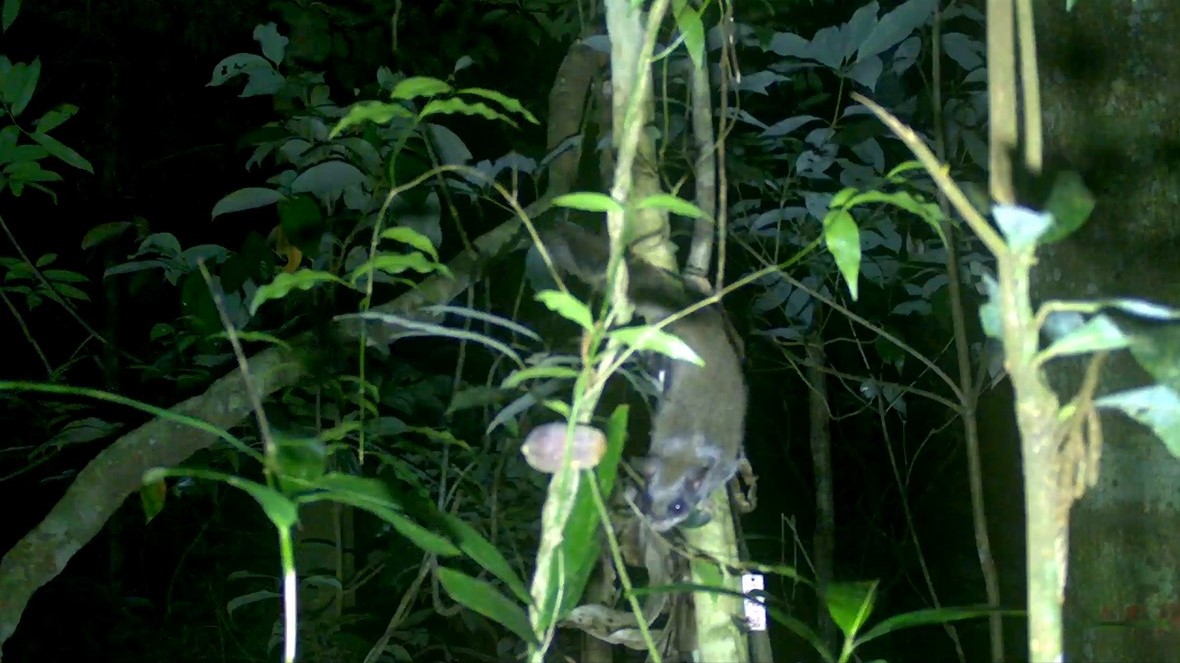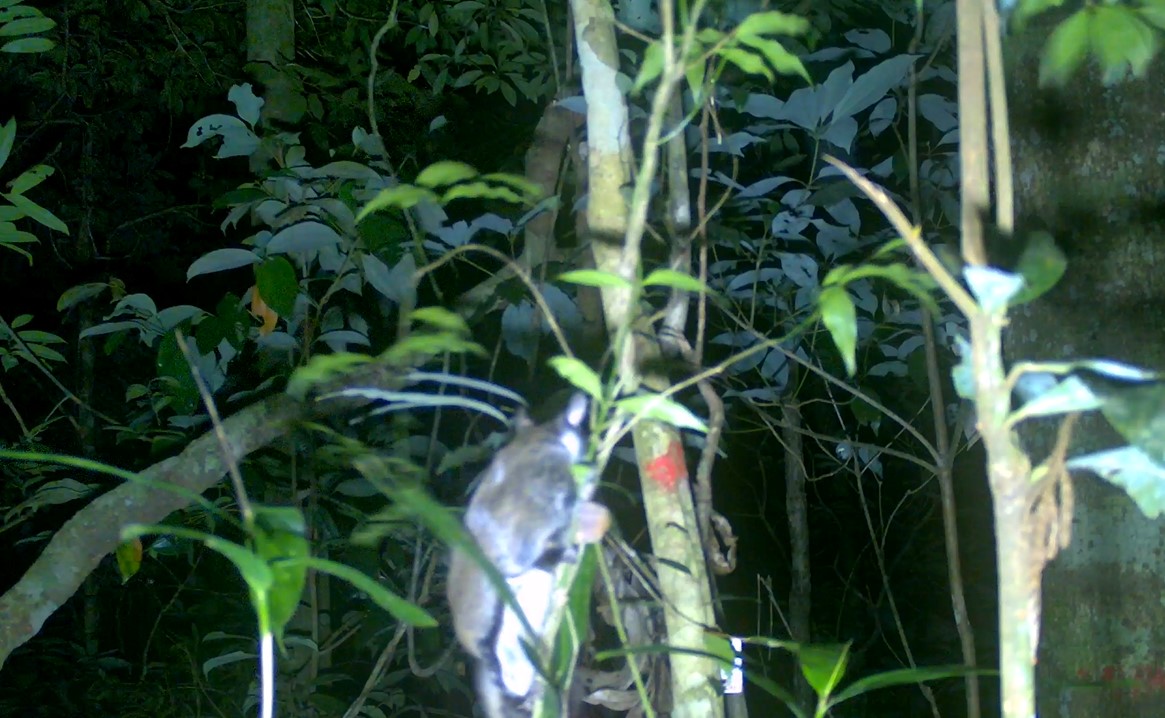Flying squirrels in China have discovered a clever new trick to store nuts for longer
Two species of tropical flying squirrels have worked out that if they nibble grooves around nuts to store them between tree branches, they are preserved for longer.

Flying squirrels in China have developed a clever way to hide their nuts — chewing grooves in them so they can be stored between tree branches.
The unusual behavior, seen in two species in the tropical rainforests of Hainan Island, may preserve the critters' food for longer than burying the nuts in the moist forest floor, scientists said.
"Only these two flying squirrel [species] have this technique and no other squirrel species or animals are known to have this ability," Han Xu, professor of ecology at the Chinese Academy of Forestry in China, told Live Science. The findings were published June 13 in the journal eLife.
Related: Watch squirrels perform parkour-like stunts for peanuts
To capture the unusual behavior, Han and his colleagues set up 32 infrared cameras across 13.5 acres (5.5 hectares) of rainforest where they had found 151 nuts wedged between tree branches. Most of the nuts were stored between 5 and 8 feet (1.5 to 2.5 m) above the ground.
After analyzing the recordings, the researchers found that Indochinese flying squirrels (Hylopetes phayrei) and particolored flying squirrels (Hylopetes alboniger) nibbled at grooves in the nuts and adjusted how the nuts were positioned between Y-shaped tree branches so that the twigs fit better into nuts' furrows.

When the researchers checked on the stored nuts three and a half months later, they found the nuts had not germinated. As nuts stored in the ground typically germinate within two to three months, the team think the unique storage technique might help preserve the nuts for longer, said Xu.
Sign up for the Live Science daily newsletter now
Get the world’s most fascinating discoveries delivered straight to your inbox.
"We also think the squirrels may have learned the habit from individuals that first invented the storage technique," said Han.
Other experts not involved in the study told Live Science the findings help shine a light on ways animals adapt to environmental challenges.
Other experts not involved in the study told Live Science the findings help shine a light on ways animals adapt to environmental challenges.
"This is an important and valuable discovery on flying squirrels' hoarding behavior," Pizza Ka Yee Chow, whose research at the University of Chester in the U.K. focuses on animal behavior and cognition, told Live Science. "The suggestion on storing nuts in the fork of twigs to avoid germination is possible, and it is always interesting to see how animals develop surprising and effective ways to overcome challenges from their environment."
But the behavior is not so different to previously described squirrel behaviors, said Nathanael Lichti, a landscape ecologist at Purdue University in Indiana. "There are many species of squirrels, chipmunks, and mice that gnaw on seeds to prepare them for storage, Lichti told Live Science.
In future, it would be interesting to explore “whether the behavior is learned or innate; do young squirrels do it instinctively, or do they pick it up by watching adults?” said Lichti.

Carissa Wong is a freelance reporter who holds a PhD in cancer immunology from Cardiff University, in collaboration with the University of Bristol. She was formerly a staff writer at New Scientist magazine covering health, environment, technology, nature and ancient life, and has also written for MailOnline.










